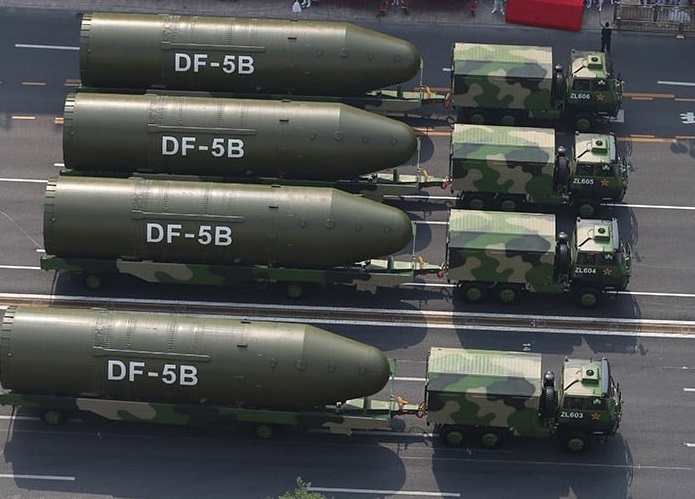China’s expanding nuclear arsenal reaches 500 warheads
According to SIPRI’s latest assessment on nuclear weapons, China will have as many as ICBMs as the United States and Russia by the turn of the decade. Meanwhile, India is no longer focusing on deterring Pakistan, but is developing long-range capability to reach targets across China.
Stockholm (AsiaNews/Agencies) – China has reached the threshold of 500 nuclear warheads, some in a state of high operational alert on ballistic missiles, this according to the annual assessment by the Stockholm International Peace Research Institute (SIPRI), the most authoritative independent source in the field.
SIPRI’s 2024 Yearbook notes that all nine nuclear-weapon states – the United States, Russia, the United Kingdom, France, China, India, Pakistan, the Democratic People's Republic of Korea (North Korea), Israel – continued to modernise their nuclear arsenals in 2023, with several deploying upgraded weapons and capability.
Out of 12,121 warheads estimated to exist in January 2024, 9,585 were in military stockpiles for potential use while 2,536 are retired Cold War-era warheads.
SIPRI estimates that 2,100 warheads are kept in a state of maximum operational alert on ballistic missiles.
Until recently, almost all belonged to Russia or the United States (which alone together possess almost 90 per cent of the entire arsenal), but China is now believed to have, for the first time, deployed some on missiles.
“China is expanding its nuclear arsenal faster than any other country,” said Hans M. Kristensen, Associate Senior Fellow with SIPRI’s Weapons of Mass Destruction Programme and Director of the Nuclear Information Project at the Federation of American Scientists (FAS).
China’s arsenal grew from an estimated 410 to 500 in 2023. Depending on how it decides to structure its forces, it could potentially have at least as many intercontinental ballistic missiles (ICBMs) as Russia or the United States by the end of the decade, although its stockpiles of nuclear warheads are expected to remain much smaller than those of the United States and Russia.
“While the global total of nuclear warheads continues to fall as cold war-era weapons are gradually dismantled, regrettably we continue to see year-on-year increases in the number of operational nuclear warheads,” said SIPRI Director Dan Smith. “This trend seems likely to continue and probably accelerate in the coming years and is extremely concerning.”
India, Pakistan, and North Korea are also building their capacity to deploy multiple warheads on ballistic missiles, something that Russia, France, the United Kingdom, the United States and, more recently, China have already done.
This would lead to a rapid potential increase in deployed warheads and the possibility for nuclear-armed countries to threaten the destruction of a much larger number of targets.
India slightly expanded its nuclear arsenal in 2023. Both India and Pakistan continued to develop new types of nuclear launch systems in 2023.
While Pakistan remains the main target for India's nuclear deterrent, New Delhi appears to be placing an increasing emphasis on longer-range weapons, including those capable of reaching targets across China.
Finally, according to SIPRI's early 2024 estimates, North Korea has about 50 warheads and possesses enough fissile material to reach a total of 90 warheads, both significant increases over January 2023 estimates.







.png)










